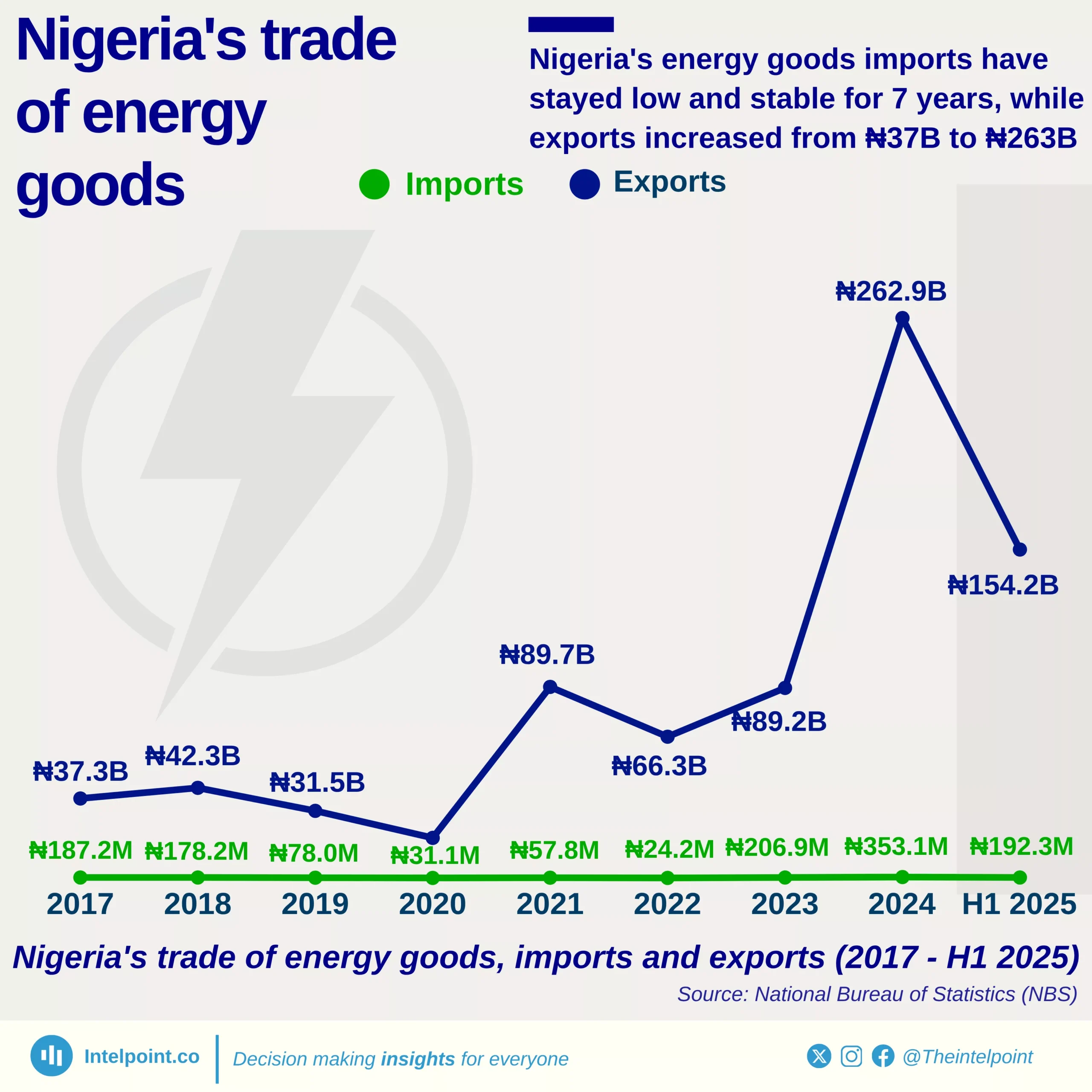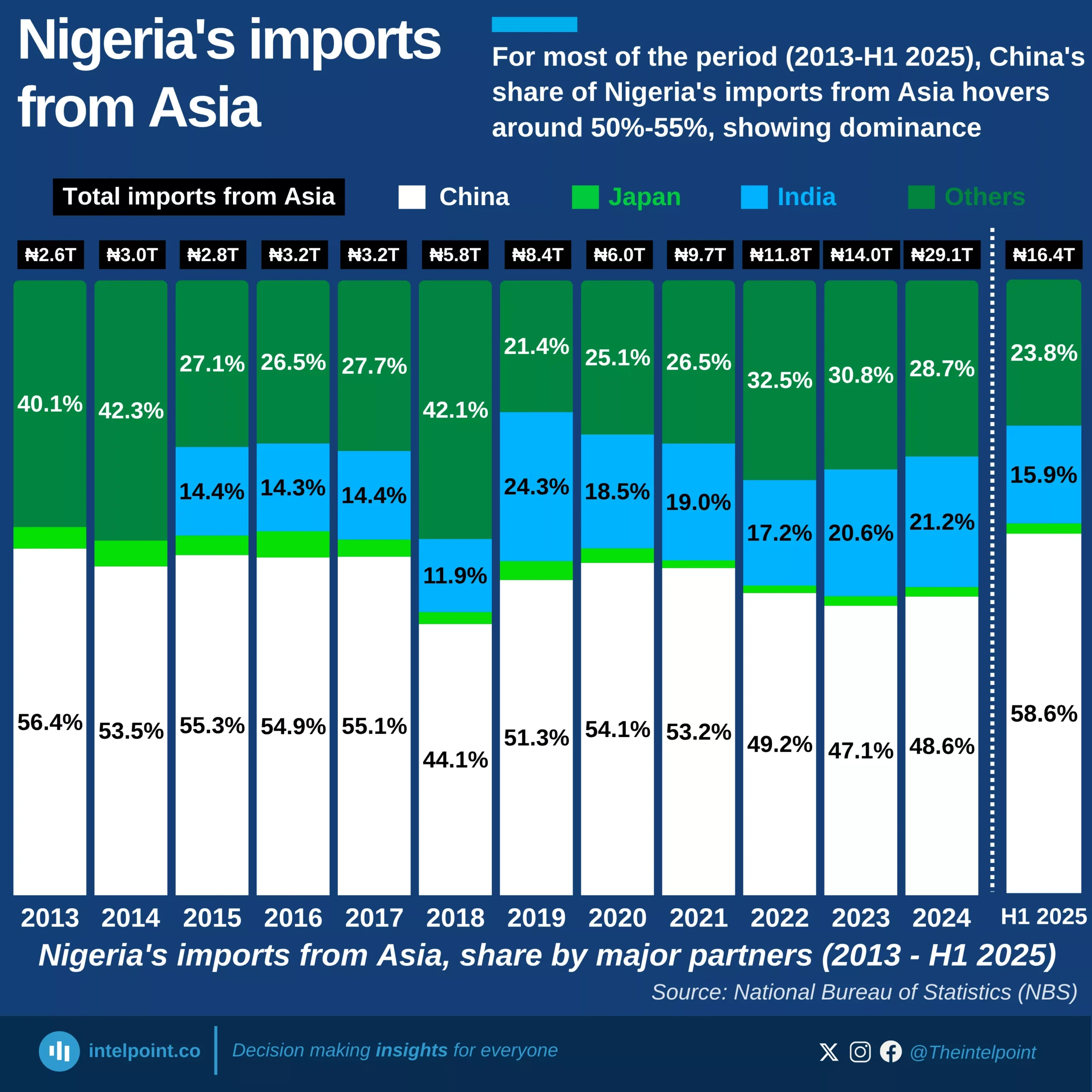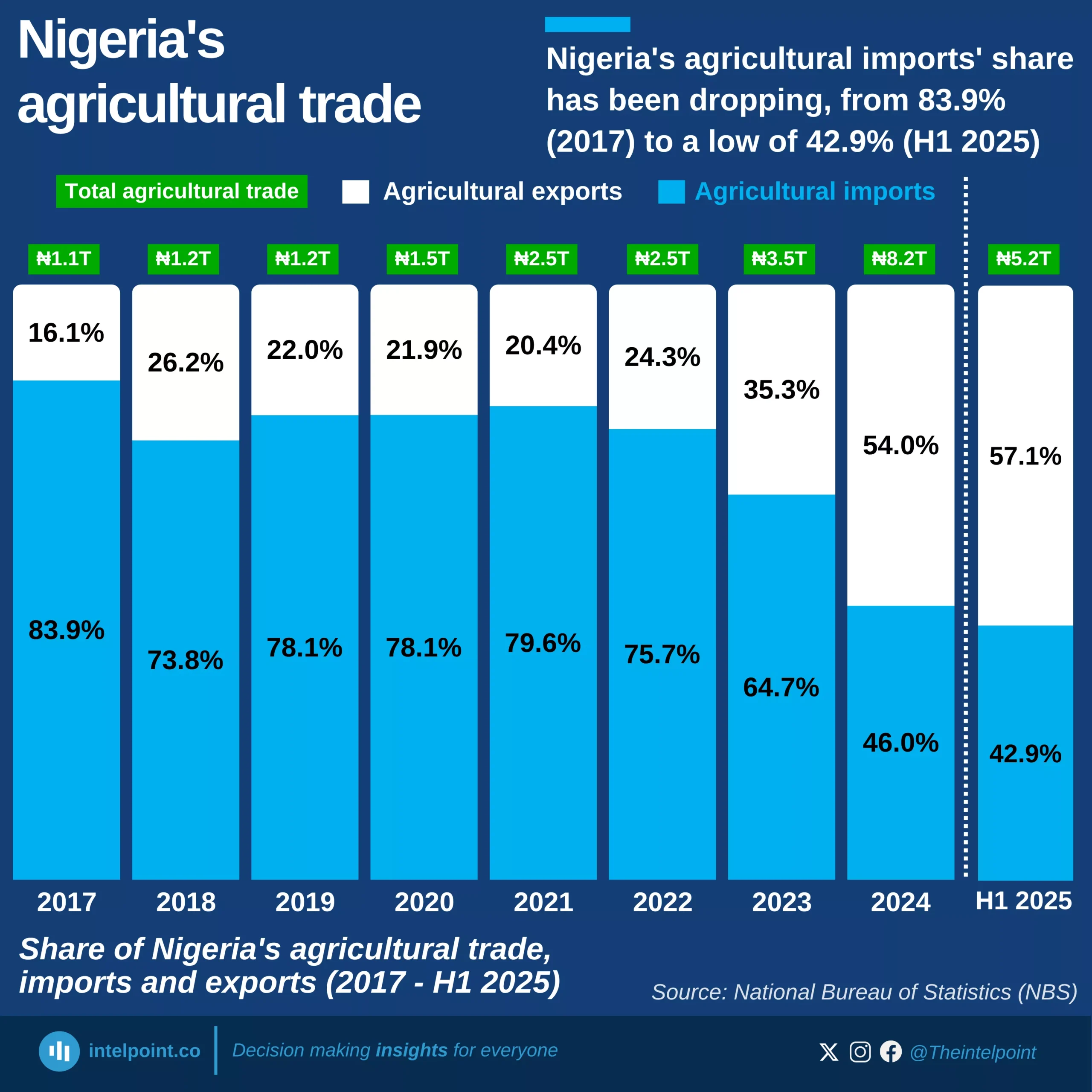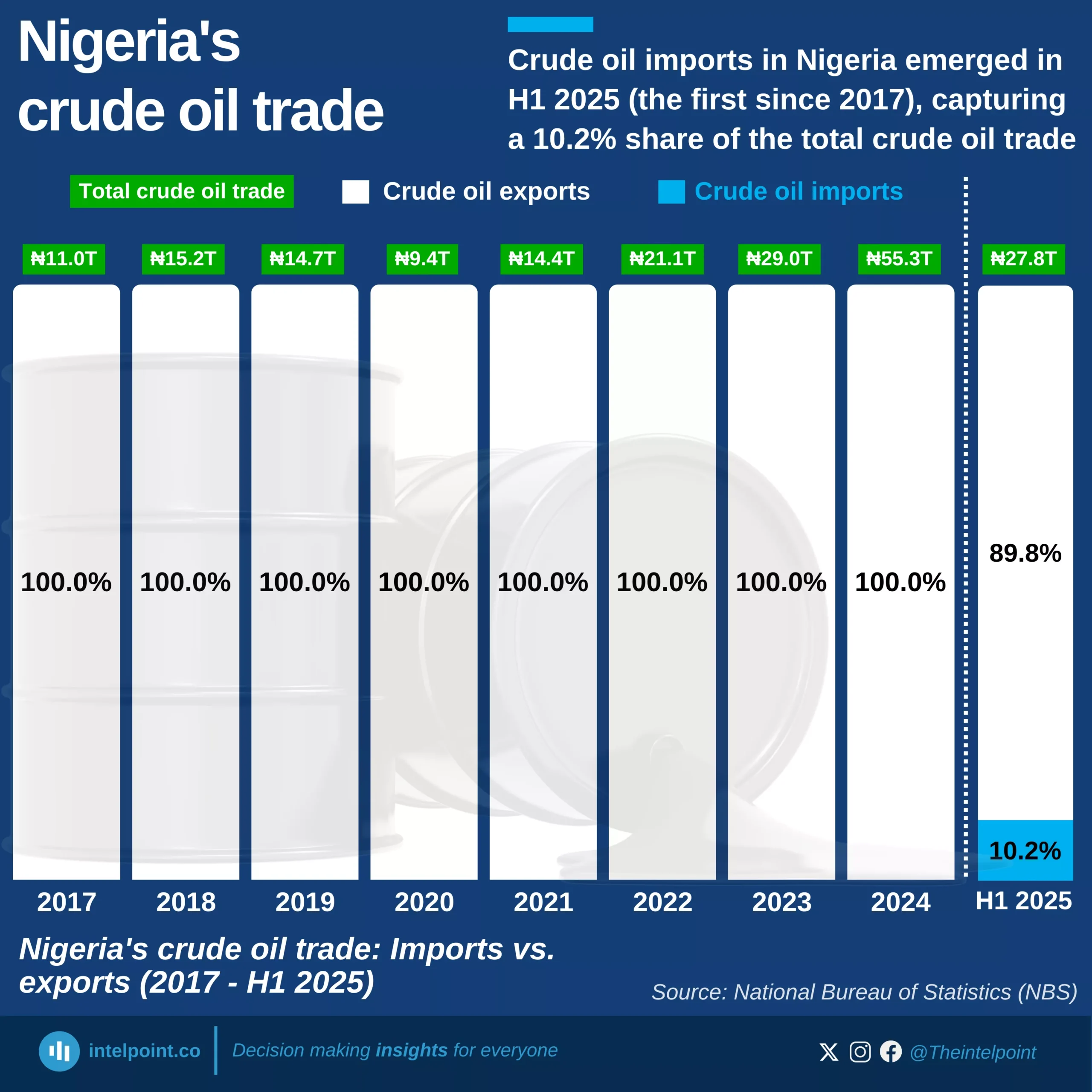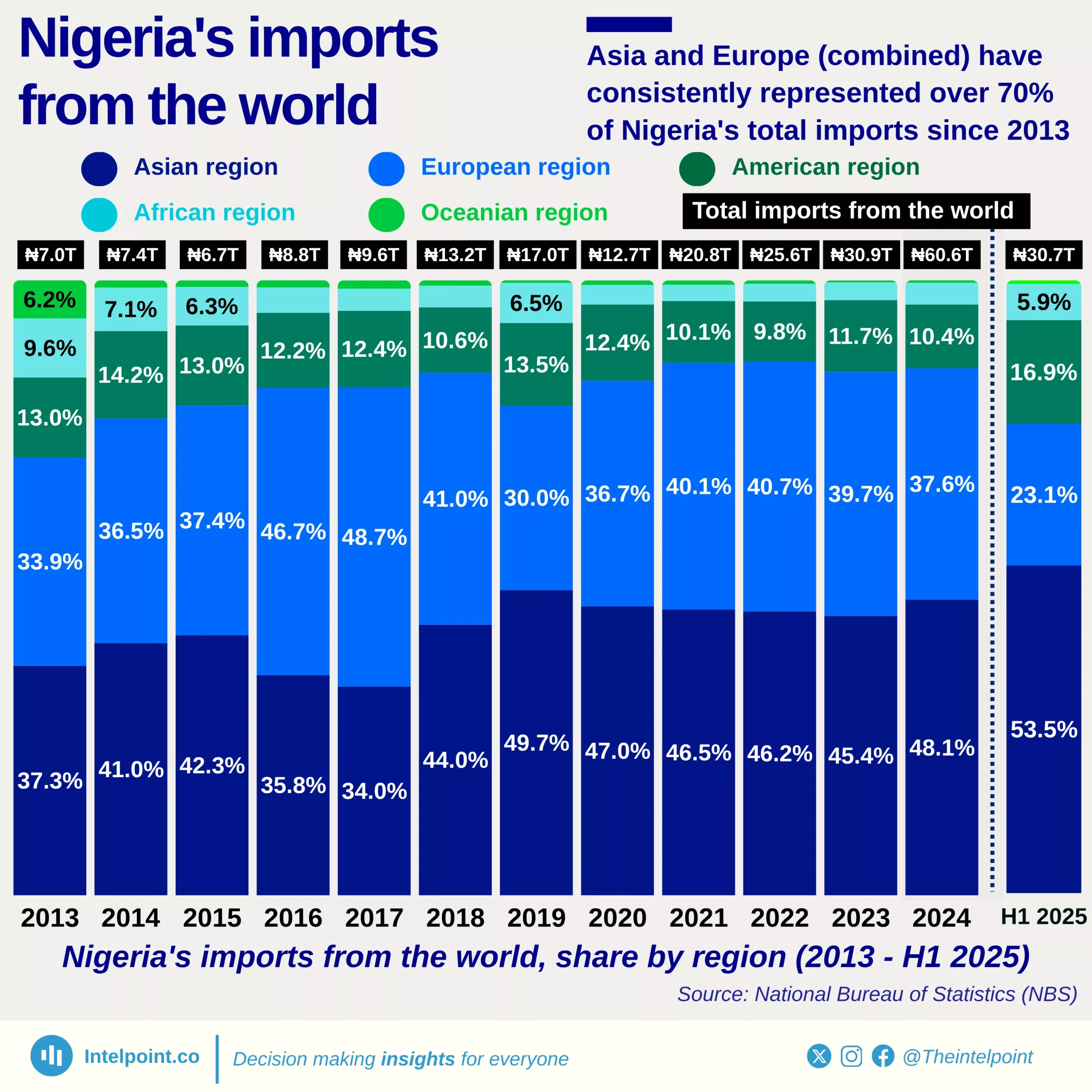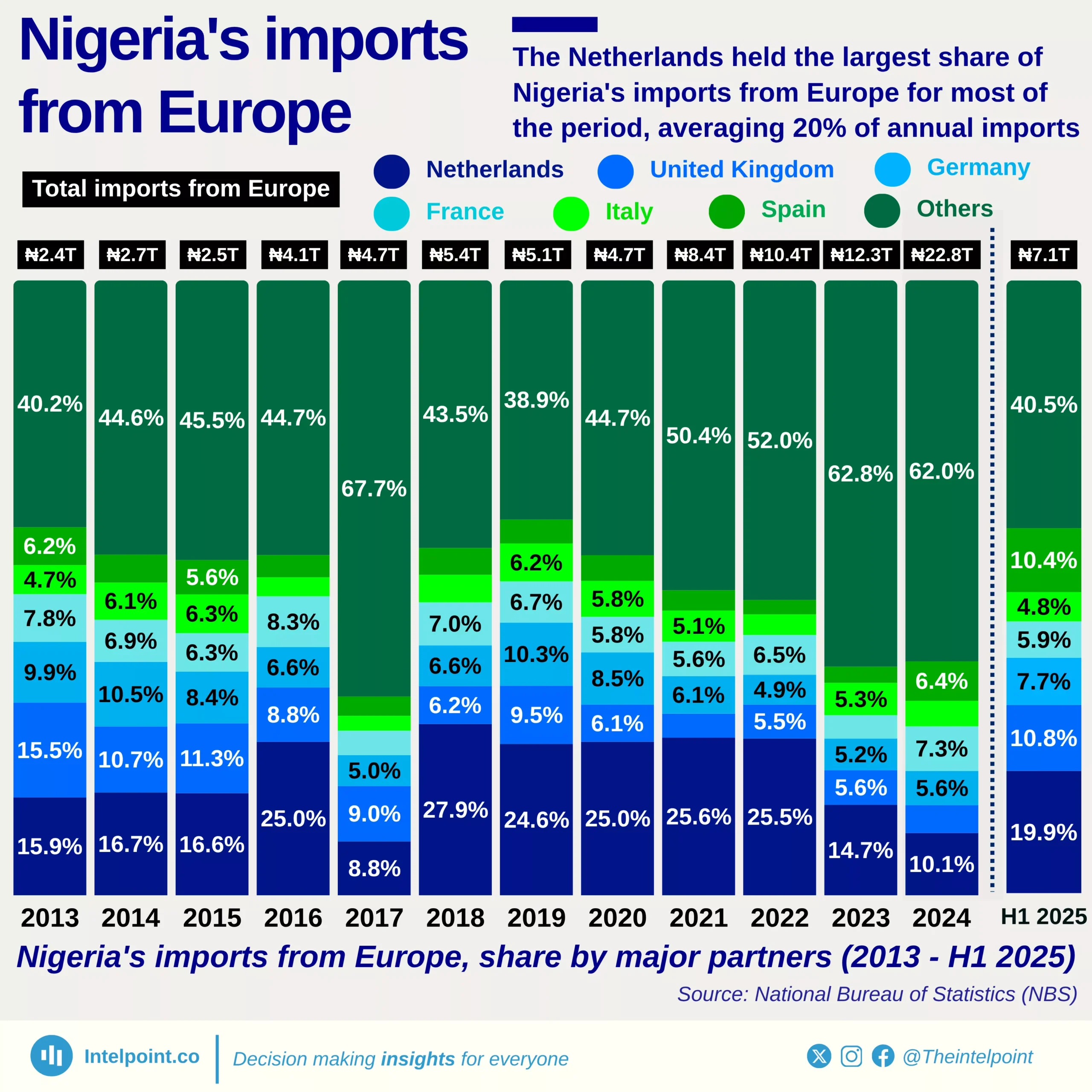Nigeria’s total imports reached ₦60.6 trillion in 2024, with fuels and lubricants emerging as the dominant import category, accounting for ₦22.7 trillion (37.4%) of the total. This underscores the country’s heavy reliance on imported petroleum products despite being a major crude oil producer. Industrial supplies ranked second with ₦13.4 trillion (22.1%), reflecting the strong demand for raw materials and intermediate goods needed by Nigeria’s manufacturing and construction sectors.
